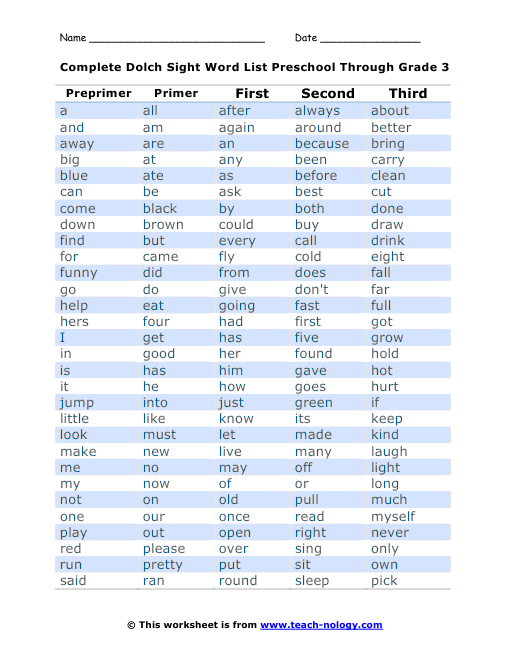


- #Washington state kindergarten sight word list how to#
- #Washington state kindergarten sight word list series#
They couldn’t break down the original word into phonemes and then transfer their knowledge of those phonemes to a new word.īut children could succeed on this task if they were first given some explicit instructions. They gave them the word “fun,” and asked whether the word was “fun” or “bun.” Very few of the students could do this successfully. Then, the researchers tested whether the children could transfer their knowledge to reading a new word. In these studies, conducted by Brian Byrne and Ruth Fielding-Barnsley, researchers taught young children between ages 3 and 5 to read whole words aloud, like “fat” and “bat.” These children didn’t already know their letter names. One set of studies from 1989-90 illustrates this phenomenon well(9). While some young children may make those connections themselves, most do not. What is systematic, explicit phonics instruction, and why is it important?Ĭonnecting printed letters on a page to written sounds isn’t intuitive(8). Someone reading Chinese hanzi characters could not “sound out” unfamiliar words character by character(7). Its writing system is partially logographic-in which written symbols correspond directly to a word or concept-and also includes words that couple symbols for meaning and symbols for sound. It uses a tonal spoken language, conveying meaning with small differences in stress or pitch. To read an alphabetic language, children must learn how written letters represent spoken sounds(6), recognize patterns of letter sounds as words, and match those to spoken words whose meanings they know. The way they learn to connect oral and written language(4) depends on what kind of language(5) they are learning to read.Īlphabetic languages, like English or French, use letters to stand for sounds that make up spoken words. A child develops understanding of speech through exposure to language and opportunities to practice the “serve and return”(3) patterns of conversation, even without explicit instruction.īy contrast, children do not naturally develop reading skill through exposure to text. Within the first two years, typically developing toddlers’ brains focus on the most common sounds in their native languages and connect those sounds to meaning. Some research suggests infants learn probabilistically-for example, hearing the sound “ball” at the same time as the sight of a round, bouncy object over time makes the child associate the two-while other studies suggest children map meaning to a word after experiencing it just once or twice. They don’t consciously distinguish individual sound units (called phonemes) when hearing spoken language. Infants learn to speak (2) by listening to and repeating sounds made by adults and connecting them to meanings. Don’t children learn to read the way they learn to speak? And it explains why we know that most children can’t learn to read through osmosis or guessing. It touches on what else should be part of early reading programs. It covers what’s known about how we should teach letter-sound patterns, and what we don’t know for sure yet. That’s why we’ve put together this overview of the research on early reading, in grades K-2. Eventually, they need to be able to recognize most words automatically and read connected text fluently, attending to grammar, punctuation, and sentence structure. They need deep background and vocabulary knowledge so that they understand the words they read. They need to know the different sounds in spoken language and be able to connect those sounds to written letters in order to decipher words. Reading requires children to make meaning out of print. As such, there is more to teaching reading than just teaching phonics. Of course, there is more to reading than seeing a word on a page and pronouncing it out loud.
#Washington state kindergarten sight word list how to#
And for the last few decades, the research has been clear: Teaching young kids how to crack the code-teaching systematic phonics-is the most reliable way to make sure that they learn how to read words. Certain combinations of letters predictably represent certain sounds.
#Washington state kindergarten sight word list series#
Another idea suggests that reading is a series of strategic guesses based on context, and that kids should be taught these guessing strategies.īut research has shown that reading is not a natural process (1), and it’s not a guessing game. If teachers and parents surround children with good books, this theory goes, kids will pick up reading on their own. One theory is that reading is a natural process, like learning to speak.


 0 kommentar(er)
0 kommentar(er)
